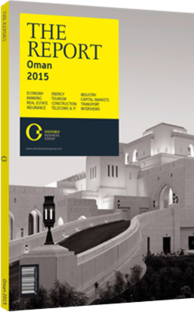Hawazen Esber, CEO, The Wave Muscat: Interview

Interview: Hawazen Esber
How has the integrated tourism complex (ITC) model facilitated real estate sector growth?
HAWAZEN ESBER: ITCs are an effective enabler and platform for developers and investors to use in the real estate sector in Oman. Indeed, developers have been able to use this model to grow the market in recent years, as seen through the success of projects such as The Wave. The increasing diversification of Oman’s economy has helped to attract new foreign investment in the country, as well as grow demand for premium housing options, particularly as foreigners increasingly choose to live and work in Oman.
Freehold ownership of land by foreigners is the biggest incentive of the model, thereby giving expatriates a channel to own property as opposed to renting, while also providing greater availability of long-term residency visas. As the ITC model is relatively new, our partnership with the government allows us to work together to develop leading benchmarks for the rules and regulations governing ITC community management and development controls.
Oman is set to become one of the leading tourism destinations in the region, and the ITC model provides an ideal platform to establish and meet the growth requirements of this sector. In addition to residential properties, we will have four hotels within the project, creating over 900 rooms.
We are also developing other tourist attractions, such as the marina and a world-class golf course, which will serve as a home for international events and small and medium-sized enterprises. Indeed, the attractiveness of tourism in Oman is only heightened by these offerings, helping to further brand the country as a premier destination.
To what extent is the market protected from demand and construction input price volatility?
ESBER: Oman has a respected reputation of sustainable and stable growth, in contrast to the ups and downs witnessed in other markets in the region. From a market confidence standpoint, the country is in a strong position both internally and externally, as evidenced by the growing amount of foreign investment in Omani businesses and real estate.
When it comes to the construction supply chain, the recent GCC economic upswing will have some impact on construction input prices, though they remain fairly stable in Oman. As a developer we are conscious of the effects of price increases and consistently review our master plan, designs and the overall market to manage the associated risks.
How is the sector balancing its focus on the high-end market with the need to develop more affordable housing options for expatriates?
ESBER: There is a lot of opportunity and demand in the middle and upper-middle subsectors of the residential market. By definition, ITCs are more of a tourism destination, with the expectation of international quality standards and upscale amenities.
Given the market dynamics and significant infrastructure costs, the ITC model works best at the high end of the market. While there are local developers focusing on developing the middle and upper-middle segments of the market, regulation allowing foreign ownership of non-ITC units is not yet in place.
What is the hotel demand mix in Oman, and how are different price segments being served?
ESBER: There is underlying demand for new hotels across all star ratings, but particularly in terms of five-star hotels. At present, the supply is mostly being driven by the government’s tourism strategy. If the primary goal is to attract high-end tourism based on the country’s natural wonders, spas, culture and history, we will need to cater to the more sophisticated tourist market, which includes the development of new luxury hotel experiences. That said, the current strategy of diversifying the quality and location of hotels within Oman is also proving successful.
You have reached the limit of premium articles you can view for free.
Choose from the options below to purchase print or digital editions of our Reports. You can also purchase a website subscription giving you unlimited access to all of our Reports online for 12 months.
If you have already purchased this Report or have a website subscription, please login to continue.

